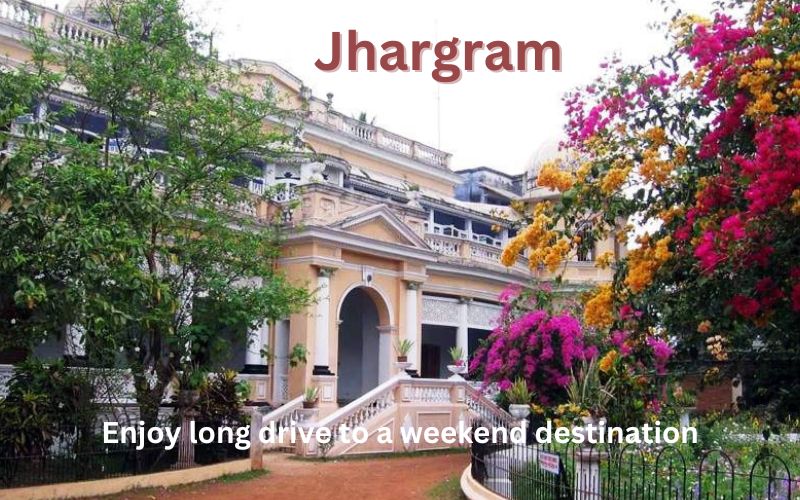
Tour of Jhargram, a district in West Bengal which is around 175 km from Kolkata. It takes around 4 hours along NH16 for a perfect destination for a long weekend trip. It is a paradise for nature lovers with bountiful forests of sal, teak, peasal and mahul, wild elephants, deer and birds. Multiple stay options are available for tourists such as hotels, resorts, tents, etc.
In this article we will first discuss the about the places and people of Jhargram and at the end we will discuss on probable 2N3D itinerary of tour plan. Here we start:
History of Jhargram Royals
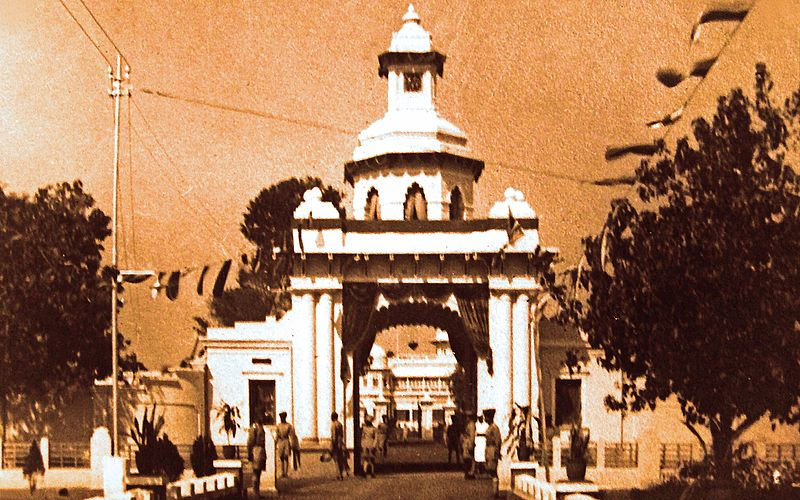
The kingdom came into being during the later part of the 16th century when Raja Man Singh of Amer was appointed the Dewan of Bengal, Bihar and Orissa by Mughal Emeror Akbar the Great. Legend says that around 1592 CE, Man Singh had come to conquer Bengal on behest of the Mughals from Rajasthan. He appointed one of his loyal Generals in the army, Shri Sarveshwar Singh, to defeat the local rulers of the region known as Jungle Mahal.
The area belonged to the Mal kings, who were ancient warriors and a powerful dynasty in the eastern part of India since the time of the Mauryas and the Guptas. In order to commemorate this victory he adopted the surname, Malla Dev which became part of the name and style of his descendants. Hence as a royal tradition every year an idol of Mal Raja is made and slain on the day of Vijayadashami. Jhargram Rajbari is a blend of grand history and fascinating scenic beauty which has been enthraling the tourist for long time.
Savitri Mandir
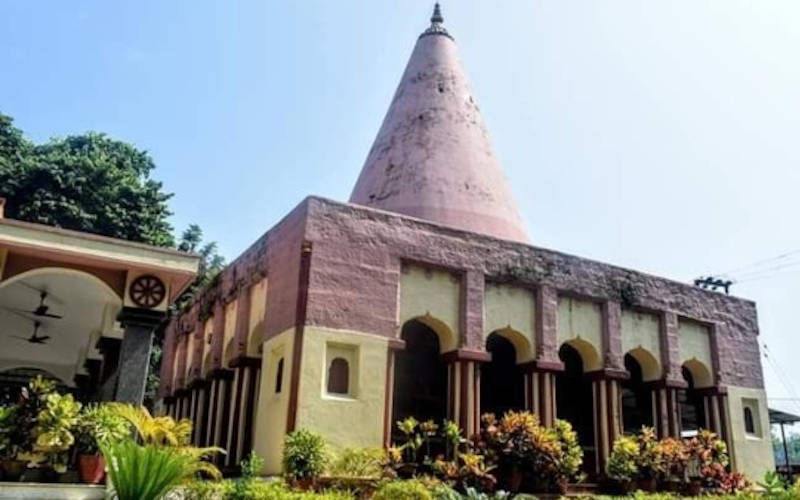
The 350-year-old Savitri mandir is possibly the oldest structure in Jhargram. Legend has it that Savitri Devi inspired Rajput warrior Sarveshwar Singh to remain back at Junglekhand. The idol of the Savitri Devi is being worshipped since then.
Goddess Sabitri is the ancestral deity of the Malla Deb dynasty of Jhargram, she is worshipped in form of Durga. There is no specific idol kept in the Savitri Mandir but a stone believed to have divine embodiment of Goddess is worshipped here. There are many fables and myths regarding Goddess Sabitri and the temple among the local people.
Goddess is worshipped in Savitri Mandir strictly according to Puranas the ancient Hindu religious texts during the Durga Puja as Brahmins recite hymns from the scriptures from the Devi Mahatmyam from Mahalaya to Dashami followed by the Maha Aarti on Durga Ashtami the eighth day of this orthodox worship and the Ritual Dhakis carry large Dhaks to show off their skills. The rituals of the Durga Puja are still organized and performed in Savitri Mandir by the Royal Family of Jhargram.
Junglemahal Zoological Park
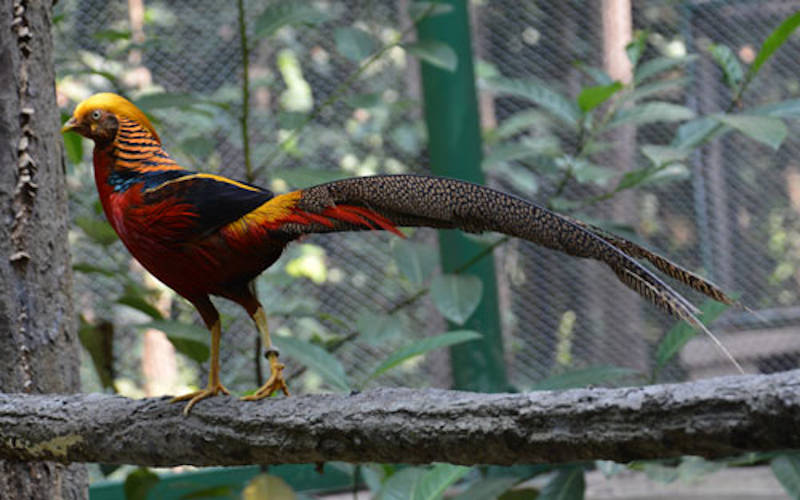
Junglemahal Zoological Park earlier known as Jhargram Zoo has been established as a Deer Park in the year 1980, within Khasjungle i.e. natural forest Dhabani Beat of Jhargram. Subsequently, it was recognised as Jhargram Zoo with the objectives of scientific management, conservation of endangered species and also to develop empathy amongst the citizen of the area towards wildlife conservation. This is a must visit place while travelling Jhargram. We found all the animals healthy and playful.
Also Read : Tour of Ayodhya Hills Purulia
Kanak Durga Mandir
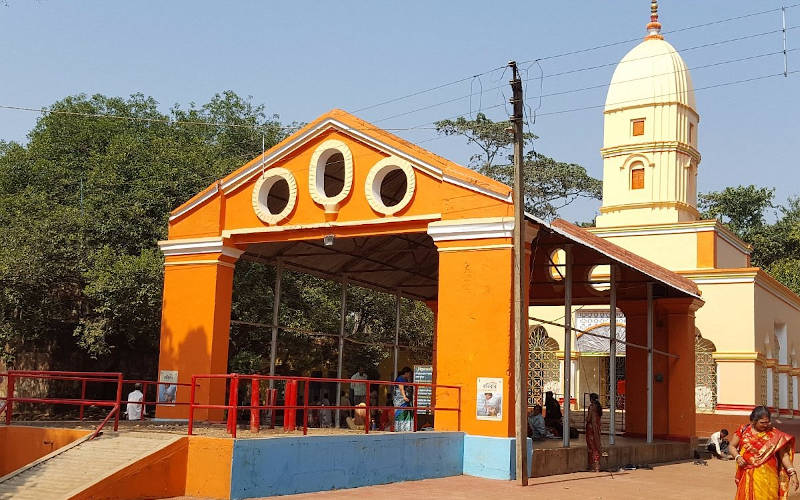
Kanak Durga temple is located in the Jamboni area of Jhargram. Once it used to be known as “Gateway to Bengal” due to its location at the border area between Jharkhand and West Bengal.
We found there is an old abandoned temple few meters from the new temple. Actually the old was temple was damaged badly, may be, by subsiding of soil or by thunder. The new larger temple was built. Devi Kanak Durga is a symbol of Energy and Power. Idol in the new temple is made of Kanak (gold).
History narrates that Devi Durga came in dream of king Gopinath and ordered him to build the temple. It is thought that king Kamalkanta planned to shift of the temple but Devi came in his dream and ordered not to shift. Idol was there in that old temple for centuries.
Another folk lore said, after a long drought at Chilikigarh, there was a sudden deluge in area that saved the region from further prolonged draught. But deluge did not harm local population. Hence local people felt that Devi Mahamaya saved them. Later local people erected the new temple near the same in temple ground.
Ghagra Falls and Tarafeni River
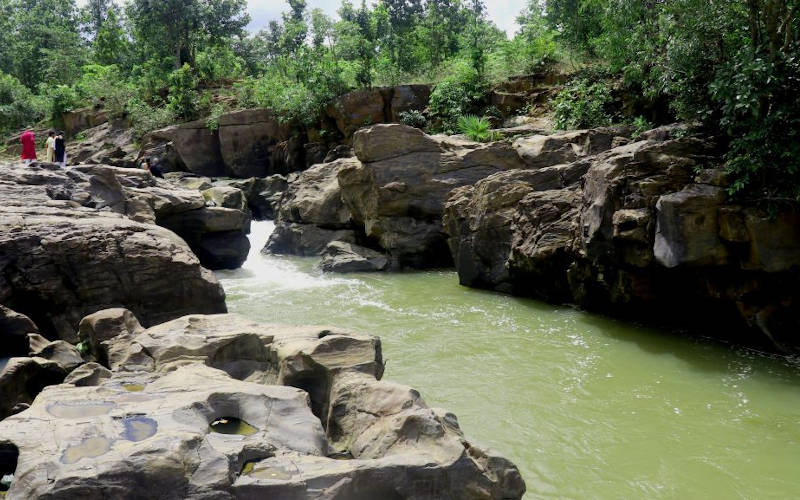
Tarafeni and Ghagra waterfall, Tarafeni Barrage under Belpahari Gram Panchayat is definitely an attractive place where public get enthralled at the sight of atractive nature and of the river currents against the rocky boulders, during rainy season. It is at a distance of nearly 5 km from Belpahari. It is the place where the guest stare on the meandering currents of the river criss-crossing the zig-zag paths.
This small barrage is definitely an vital provide of providing drinking water to thousands of the people in the area. Tarafeni river receives its share of water mainly from Mukutmonipur Dam. Its beauty becomes all the more amazing when the Barrage releases water by way of the channels and the dancing and leaping currents of water. Ghagra situated at a distance of 8 km from Belpahari.
The gurgling streams of Ghagra lashing against the craggy rocks gives visitors an opportunity of uncommon glimpse of nature. Ghagra, a small waterfall attracts the visitors for its unnatural splendour and spectacular flow of unfettered water currents. This really is the place where once the shooting of the Bengali film “Behula Lakhindar”. During rainy season the Ghagra becomes most beautiful.
Chilkigarh Rajbari
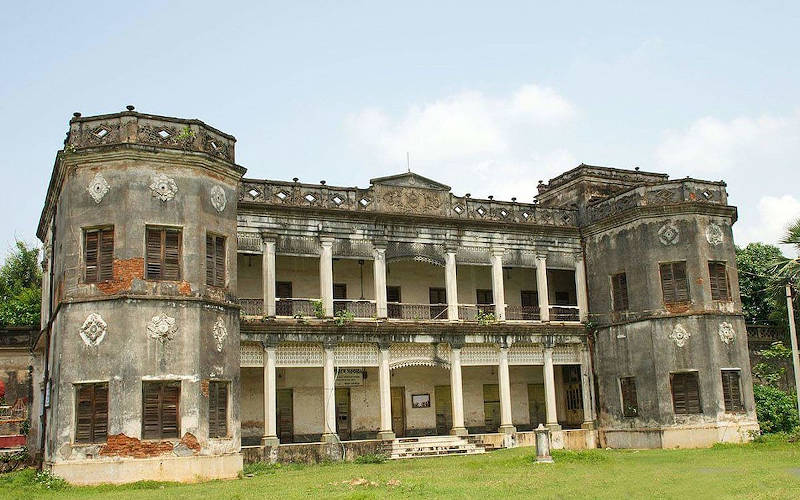
History of Chilkigarh Rajbari goes like, king Jagatdeo from Suryavansh dynasty hailed from Madhya Pradesh assumed name King Dhawaldeb after defeating Chilkighar’s king Dhalraj. He later assumed another name “Jagannathdeb Dhawaldeb”.
King Gopinath was a popular king in Jangle (Jamboni) at that time. He got her only daughter married to Jagannathdeb Dhawaldeb. After this marriage, relationship between Junglemahal and Dhalbhum become stronger. It was a golden age of Jamboni. History narrated that Devi Durga came in dream of king Gopinath and ordered him to build the (old) temple.
Way back in 13th century, Jagannath Dhawaldev invaded Jungle Mahal. During those days, Maratha dacoits called ‘Borgi’ used to often attack this part of Bengal. To prevent their invasion, Dhabaldeb constructed his fortress on the other side of Dulung River inside the forest so that his private residence is protected by the water stream. The Chilkigarh Rajbari is now in a dilapidated state. It consists of two floors and a huge grounds which has two temples in it. But the utter lack of maintenance was appalling, given the historical importance of the Chilkigarh Rajbari and its strategic location.
Kakrajhor
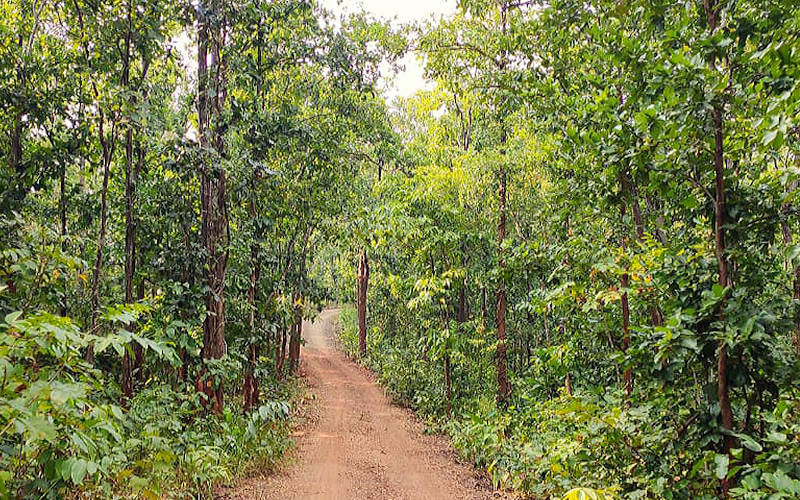
Kakrajhor hill stands as the witness to the dense gracefull forest beneath. ‘Kakra’ means ‘hills’, while ‘jhor’ means jungles and forests, together they make up the hilly lands with dense forests. Kakrajhor comprises of 9,000 hectares of hardwood trees including kusum, shaal, segun, mahua and akashmoni. The sound of madol drum beats at nights takes you back to those old days.
During the full moon night and in spring, creates a mesmerizing beauty. It has varieties of trees and forest product which tribes like Lodhas, Shabars etc. uses for their livelihood. It seems Kakrajhor always welcomes you to enjoy this thrilling beauty of nature.
First-time trekkers have the ideal route for their initiation into this world of adventure. Any reasonably fit individual can explore this trek route from Bulaveda to Kakrajhor.
Dhangikusum – Pathar Gram
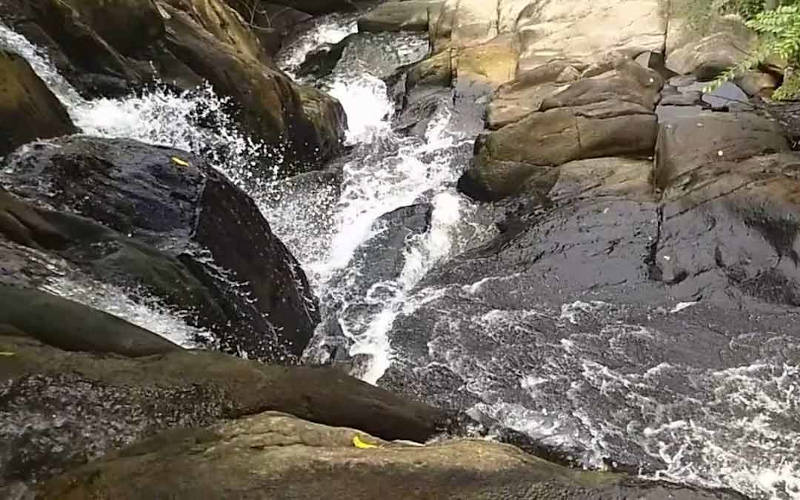
Dhangikusum is situated at a distance of 13 km from Belpahari on way to Kankrajhor, just turn left from Chirakuti and reach at Dhangikusum View Point. Zigzag paths ups and downs criss-crossing roads and wild greenery with Sal, Pial, Kendu, Simul etc. which is something memorable. Dhangikusum (locally known as Dungri) Falls is just 1km from the view point. Dhangikusum Village is popular for their stone craft and you can purchase the handicraft products. Every house in the village is engaged in stone carving. You may buy their crafts from them even to support the cause also.
The Belpahari area like Ghagra and Kankrajhor are not to be missed. A little adventure in day time, sound of Madol in the evening and the mesmerising jungle will leave a mark in your heart.
An ideal itinerary for Tour of Jhargram
| Duration: | 3 days, 2 nights |
| Best Time: | Best time to visit Jhargram is between October and March |
| Must Visit: | Jhargram Rajbari, Savitri Mandir, Jhargram Zoological Park, Tribal Museum, Ghagra Falls, Kanak Durga Mandir, Chilkigarh Rajbari and many more |
- Day 1: Reach Jhargram before noon, check-in to a beautiful cottage adjacent to Rajbari. Recharged ourselves after a nice bath and lip smacking lunch at the restaurant, we started for Kanak Durga Mandir, Dulung river. From there towards Chilkigarh and ended with the Zoo.
- Day 2: Begin your day after breakfast straight to Ghagra Falls of Tarafeni river. Then start towards Belpahari to Dhangikusum and Dungri falls after a little break for tea we set for Ketki jharna (actually a lake) and at last set for Kankajhore which is a few hundred meters from Jharkhand border.
- Day 3: The day to say goodbye, but before that today we were to know this Rajbari and it history well. Started our with our guide to the Royal Guesthouse, the temple attached to Rajbari and lastly to Rajbari itself. Then we went to Savitri Mandir. Its history is interwind with the history of establishment of Malla Dev dynasty.
